#Lunar Module Ascent Engine
Text


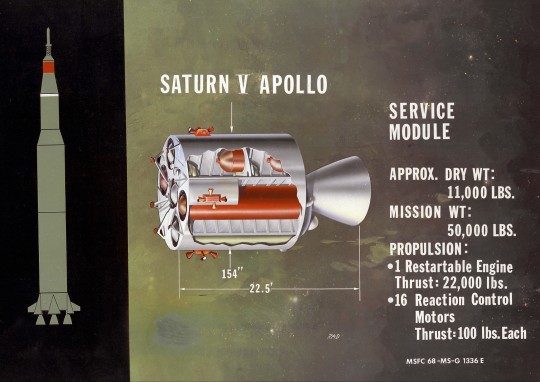






Cutaway diagram of the Apollo spacecraft, S-IVB, S-II, S-IC, J-2 and F-1 engine of the Saturn V.
Date: 1967
NASA ID: 0100985, 0101138, 0101139, 0101140, 0100983, 9801810, 9801770, 0100981, 9801771
#Saturn V#Apollo CSM Block II#Service Module Engine#Aerojet AJ10#AJ10#Service Propulsion System#SPS#Lunar Module#Ascent Propulsion System#Lunar Module Ascent Engine#LMAE#Bell/Rocketdyne LMAE#Descent Propulsion System#Lunar Module Descent Engine#LMDE#Lunar descent stage propulsion#TRW VTR-10#S-IVB#S-II#Rocketdyne J-2#J-2#S-IC#Rocketdyne F-1#F-1#Rocket Engine#Apollo Program#NASA#diagram#1967#my post
58 notes
·
View notes
Text
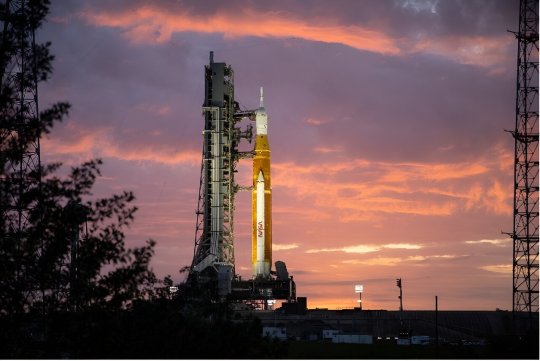

Operational modal analysis of the Artemis I dynamic rollout test
Operational modal analysis (OMA) techniques have been used to identify the modal characteristics of the Artemis I launch vehicle during the Dynamic Rollout Test (DRT) and Wet Dress Rehearsal (WDR) configuration prior to launch. Forces induced during rollout and on the launch pad are not directly measurable, thus necessitating a unique approach.
NASA is developing the SLS to support lunar and deep space exploration. SLS is integrated inside the Vehicle Assembly Building (VAB) on the mobile launcher (ML), which supports the integrated SLS launch vehicle during transport to the pad through lift-off. The ML also provides the fuel, power, and data umbilicals running to the SLS and Orion Multi-Purpose Crew Vehicle (MPCV), as well as crew access to the MPCV crew module.
The ML weighs ~10.6 million pounds and is over 380 feet tall. In the spring of 2022, the SLS was transported on the ML from the VAB to Launch Pad 39B (Figure 1) using the NASA crawler transporter (CT) to make this 4.2 mile trek, which takes ~8 hours. The CT alone weighs ~6.3 million pounds.
Although the rollout environment produces relatively small launch vehicle structural loads in comparison to launch and ascent loads for most structures, the induced loads are fully representative of all loading across the entire vehicle, which is not feasible to replicate using localized shakers as was done in the Integrated Modal Test.
As mentioned, forces induced during rollout and on the launch pad are not directly measurable, and OMA techniques were used to identify the modal characteristics of Artemis I in the DRT and WDR configurations. WDR, which typically includes vehicle fueling and other operations to demonstrate launch readiness, included several days of on-pad operations.
Data collected for the WDR configuration, with partially filled core fuel tanks and without the CT under the ML, provided engineers another model configuration to check.
Acquisition and processing the data from more than 300 accelerometers located on Artemis I, ML, and CT was accomplished by a cross-program team of engineers and technicians from across the Agency, including from SLS, Exploration Ground Systems, and the NESC. Using analytical techniques developed from previous rollout tests combined with new data-processing methodologies, the team processed data from preselected CT speed increments during rollout and on-pad during WDR.
By making the necessary modifications to the integrated models to match both the DRT and WDR configurations, the team was able to use those results to help make sense of what was being seen in the test data. This proved to be required for OMA testing on this structure, given the type of complex excitation that was being observed.
TOP IMAGE....Artemis I at Launch Pad 39B. Credit: NASA
LOWER IMAGE....Artemis I Rollout to Launch Pad 39B. Credit: NASA
12 notes
·
View notes
Text
What is the secret of Apollo 11 landing on the moon?
Hello Friends,
It is a matter of the year 29 July 1969 that the mission of Apollo 11 landed on the moon. In this, two astronauts Neil Armstrong and Buzz Aldrin are sons, Neil Armstrong tries to open the door to land on the moon, but due to high pressure, the door gets jammed. But after a while they succeed in opening. Later try to get out wearing your space suit. Because of their spacesuits while leaving their space. A piece of the Lunar Module breaks off. This thing is broken. This is not known to both of them because there is no sound because there is no wind blowing there. But the piece that was broken was the Ascent Engine Arming Switch, a very important part of the spaceship. Because of this thing, the Lunar Module could not go back to Earth. Unaware of this, Neil Armstrong takes the first step towards Chandpur. And becomes the first person in the world to step on the moon. Did this happen in reality? Even today after 50 years, many people refuse to believe that humans went to the moon. People still make up their own stories and say that the Apollo 11 mission was just a sham. Had lied after all, why was America's agenda waved on the moon? What is the truth behind this? Let's know about this topic today.
Learn more.
#Apollo 11#knowledge#history#information#realty#science#moon landing#fast moon landing#American#cold war
2 notes
·
View notes
Text
Space History...
Rarely-seen view of an Apollo Lunar Module ascent stage...

After flying separately in Earth orbit to test the various systems and engines, the Apollo 9 LM SPIDER ascent stage returns to the CSM to dock. Right in the center is the nozzle of the ascent propulsion system engine that would be the crews ride for getting off the Moon.
I have no patience with moon-landing denier conspiracy theorists. One of their arguments is that the LM is too wobbly and flimsy-looking to fly anywhere, let alone to the Moon. I'll use this photo to shoot holes in one of their arguments. Part of what you see there is indeed uneven and wrinkly, but that is NOT the structure of the spacecraft. While it had to be light, the LM is made of very strong materials, meticulously engineered to withstand the forces that it would be subjected to. What is visible here is merely insulation... stacks of thin sheets of steel and inconel-x foil to protect the structure from the heat of the engine. The gold and black surfaces on the rest of the spacecraft are the same.. sheets of metal foil and gold-coated mylar plastic that shields the spacecraft from the heat and cold of space. The actual structure of the LM was made of much sterner stuff.
The only thing the conspiracy theorists prove is that they don't understand what they are looking at and should sit down and shut up.
0 notes
Link
As NASA continues to ramp up efforts for its Artemis program, which has the goal of landing the first woman and person of color on the lunar surface, two NASA astronauts recently conducted training with a replica of SpaceX’s Starship human landing system (HLS), albeit on a much smaller scale. Given that Starship is 50 meters (160 feet) tall, and the crew quarters are located near the top of Starship, the HLS will need an elevator with a basket to transport crew and supplies from the crew quarters down to the surface. The purpose of this training is to familiarize astronauts with all aspects of this system, including elevator and gate controls and latches, along with how the astronauts perform these tasks in their bulky astronaut suits, which both astronauts wore during the training. The two NASA astronauts who participated in the recent training are Nicole Mann and Doug “Wheels” Wheelock. NASA Astronaut Mann is a Colonel in the United States Marine Corps who was selected as a NASA astronaut in the 2013 NASA Group 21. Her spaceflight experience includes 157 days in space as part of Expedition 68 onboard the International Space Station (ISS) and being launched aboard the SpaceX Crew-5 mission. NASA Astronaut Wheelock is a Colonel in the United States Army who was selected as a NASA astronaut in the 1998 NASA Group. His spaceflight experience includes 178 days in space as part of STS-120 and later as part of Expedition 24/25 on the ISS and being launched aboard the Soyuz TMA-19. As noted, Starship is 50 meters (160 feet) tall and 9 meters (30 feet) in diameter and capable of landing 100 tons (99,790 kilograms/220,000 pounds) on the lunar surface, which is in stark contrast to the Apollo lunar module that landed 12 men on the lunar surface during the Apollo program, which was only 5.5 meters (17.9 feet) tall and approximately 4.3 meters (14 feet) in diameter and a mass of 15,103 kilograms (33,296 pounds) with fuel. Ironically, the original plan for landing astronauts on the Moon during the Apollo program was known as direct ascent that involved a single, large vehicle with a payload of 74,000 kilograms (163,000 pounds) landing on the lunar surface. While NASA was in favor of using the direct ascent method in early 1961 since spacecraft rendezvous and docking had not been performed in Earth orbit yet, this was later scrapped in favor of the lunar orbit rendezvous (LOR) mission mode that was advocated by NASA aerospace engineer, John Houbolt, who estimated this would significantly reduce the weight involved in such a landing approach. LOR not only successfully landed six Apollo missions on the Moon, but it was also responsible for saving the Apollo 13 crew when one of their oxygen tanks ruptured and the crew was able to use the lunar module as a lifeboat as they flew around the Moon and came back to Earth. As NASA astronauts train for using the Starship HLS elevator someday, Starship has already conducted two flight tests—Ship 24 in April 2023 and Ship 25 in November 2023, respectively. While both flights ended in failure, Ship 25 officially passed the Karman Line, which is the traditional boundary of outer space. A third Starship test flight is currently scheduled to occur sometime in the first quarter of 2024, which also comes as the crewed Artemis II mission is gearing up for their 10-day mission orbiting the Moon in November 2024 and Artemis III currently scheduled to land astronauts near the lunar south pole sometime in 2025. How will Starship HLS help future Artemis astronauts on the lunar surface in the next few years? Only time will tell, and this is why we science! As always, keep doing science & keep looking up! The post NASA Astronauts are Trying Out the Starship Lunar Elevator appeared first on Universe Today.
0 notes
Text
Happy Moon Day!
At 10:56 p.m. EDT, American astronaut Neil Armstrong, 240,000 miles from Earth, speaks these words to more than a billion people listening at home: “That’s one small step for a man, one giant leap for mankind.” Stepping off the lunar module Eagle, Armstrong became the first human to walk on the surface of the moon.
The American effort to send astronauts to the moon has its origins in a famous appeal President John F. Kennedy made to a special joint session of Congress on May 25, 1961: “I believe this nation should commit itself to achieving the goal, before this decade is out, of landing a man on the moon and returning him safely to the Earth.” At the time, the United States was still trailing the Soviet Union in space developments, and Cold War-era America welcomed Kennedy’s bold proposal.
In 1966, after five years of work by an international team of scientists and engineers, the National Aeronautics and Space Administration (NASA) conducted the first unmanned Apollo mission, testing the structural integrity of the proposed launch vehicle and spacecraft combination. Then, on January 27, 1967, tragedy struck at Cape Canaveral Space Force Station in Cape Canaveral, Florida, when a fire broke out during a manned launch-pad test of the Apollo spacecraft and Saturn rocket. Three astronauts were killed in the fire.
Despite the setback, NASA and its thousands of workers forged ahead, and in October 1968, Apollo 7, the first manned Apollo mission, orbited Earth and successfully tested many of the sophisticated systems needed to conduct a moon journey and landing. In December of the same year, Apollo 8 took three astronauts around the far side of the moon and orbited it 10 times before returning, and in March 1969 Apollo 9 tested the lunar module for the first time while in Earth orbit. Then in May, the three astronauts of Apollo 10 took the first complete Apollo spacecraft in 31 orbits around the moon in a dry run for the scheduled July landing mission.
At 9:32 a.m. on July 16, with the world watching, Apollo 11 took off from Kennedy Space Center with astronauts Neil Armstrong, Edwin Aldrin Jr., and Michael Collins aboard. Armstrong, a 38-year-old research pilot, was the commander of the mission. After traveling 240,000 miles in 76 hours, Apollo 11 entered a lunar orbit on July 19. The next day, at 1:46 p.m., the lunar module Eagle, manned by Armstrong and Aldrin, separated from the command module, where Collins remained. Two hours later, the Eagle began its descent to the lunar surface, and at 4:18 p.m. the craft touched down on the southwestern edge of the Sea of Tranquility. Armstrong immediately radioed to Mission Control in Houston, Texas, a famous message: “The Eagle has landed.”
At 10:39 p.m., five hours ahead of the original schedule, Armstrong opened the hatch of the lunar module. As he made his way down the lunar module’s ladder, a television camera attached to the craft recorded his progress and beamed the signal back to Earth, where hundreds of millions watched in great anticipation. At 10:56 p.m., Armstrong spoke his famous quote, which he later contended was slightly garbled by his microphone and meant to be “that’s one small step for a man, one giant leap for mankind.” He then planted his left foot on the gray, powdery surface, took a cautious step forward, and humanity had walked on the moon.
“Buzz” Aldrin joined him on the moon’s surface at 11:11 p.m., and together they took photographs of the terrain, planted a U.S. flag, ran a few simple scientific tests, and spoke with President Richard M. Nixon via Houston. By 1:11 a.m. on July 21, both astronauts were back in the lunar module and the hatch was closed. The two men slept that night on the surface of the moon, and at 1:54 p.m. the Eagle began its ascent back to the command module. Among the items left on the surface of the moon was a plaque that read: “Here men from the planet Earth first set foot upon the moon–July 1969 A.D–We came in peace for all mankind.”
At 5:35 p.m., Armstrong and Aldrin successfully docked and rejoined Collins, and at 12:56 a.m. on July 22 Apollo 11 began its journey home, safely splashing down in the Pacific Ocean at 12:51 p.m. on July 24.
There would be five more successful lunar landing missions, and one unplanned lunar swing-by, Apollo 13. The last men to walk on the moon, astronauts Eugene Cernan and Harrison Schmitt of the Apollo 17 mission, left the lunar surface on December 14, 1972. The Apollo program was a costly and labor-intensive endeavor, involving an estimated 400,000 engineers, technicians, and scientists, and costing $24 billion (close to $100 billion in today’s dollars). The expense was justified by Kennedy’s 1961 mandate to beat the Soviets to the moon, and after the feat was accomplished ongoing missions lost their viability.
1 note
·
View note
Text

NASA announced yesterday (19 May) that Blue Origin has won the, Appendix-P, USD3.4b award (Blue Origin will chip in another USD3.5b itself) to build the second HLS-SLD (Human Landing System Sustained Lunar Development) companion crew Lunar lander to SpaceX's HLS-SLD Starship, beating the (other one and only) rival bid from Dynetics. The design, to be called 'Blue Moon' (no tittering please) will ultimately be used to land a crew on the Moon on Artemis V in 2029 following the use of SpaceX's HLS Starship on Artemis III in 2025 and Artemis IV in 2028.
This design is different to the design Blue Origin and partners Lockheed Martin, Draper and Boeing first submitted for the first HLS contract won by SpaceX in 2021.
The Blue Moon will be launched onboard a (yet to be launched or even seen) Blue Origin New Glenn within its 7m fairing and be delivered to the same Near Rectilinear Halo Orbit (NRHO) to be used by the Gateway station. Before it can be used for a Lunar landing it will have to be refuelled, for this Lockheed Martin is building the Cis-Lunar Transporter (no pictures or renders of this yet). Effectively a tanker which will also be launched by New Glenn to travel out to dock with the Blue Moon in Lunar orbit and transfer propellent to it (the Transporter can also provide other services to the lander whilst docked). The tanker will feature new technology under development by Blue Origin to minimise Liquid Oxygen boil off, which they call their 20 kelvin zero boil off system, to allow it to be used as a long term storable propellent (which will also have wider applications including for supporting surface operations). The crew will launch on a separate SLS-Orion Artemis mission, docking with and transferring to the Blue Moon lander via Gateway station in Lunar Orbit.
The lander will be 16m tall with a dry mass of 16t, 45t when fully fuelled, unusually (if there is a usual for Lunar landers) the propellent tanks are above the crew module (when landing anyway) with the liquid hydrogen tank on top on which will be mounted fold out radiator panels (as shown in pic) and solar panels (on the opposite side) the high gain antennas etc and the Transporter docking and refuelling connectors on the top end. In the middle is a toroidal liquid oxygen tank within a lattice structured, on the bottom is the Crew Module for four astronauts with an airlock and immediate access to the surface (unlike Starship from which the crew will need to descend on a lift platform). The port for docking with the Gateway station or Orion is mounted on the side of the crew module with a little docking window near it I noticed. The engines are then mounted to the base (my first impression are that it seems a bit weird to route the fuel lines through the Crew Module to the base when the engines could be mounted near the propellent tanks around the middle, which would mean less lunar surface and rocks being blasted up on landing and particularly take off... also the docking port could then be mounted less awkwardly on the bottom centreline... but what do i know).
For the return flight the entire vehicle will launch back into orbit to dock with the Gateway station, you can't have separate ascent stages if you intend to use the lander multiple times.
Meanwhile the Transporter will have returned to Earth to dock with and be reloaded with propellent itself form another vehicle (presumably... also not revealed yet) launched by New Glenn before it goes beck to Lunar orbit to refuel in turn the Blue Moon lander for its next mission.
Before the first crew mission (Artemis V) in 2029 a different but identical Blue Moon lander will make an uncrewed test landing in 2028, this lander would be available for future use once it returns to Lunat orbit but another new one will be used for the Artemis V mission.
Prior to these missions Blue Origin will launch two (or more) Blue Moon Mk1 vehicles (the finished landers being Mk2) to test various components of the system (again no pictures of the Mk1 yet).
Blue Origin also plan to build cargo only versions of the lander which would have a 20t payload capability in a reusable configuration or 30t in a surface delivery only (one way) configuration.
In addition to the other partners in the project Astrobotics will be providing cargo accommodation systems and Honeybee Robotics will provide cargo off-loading capabilities. Boeing will build the docking system. As with the Dragon and Boeing commercial crew spacecraft supporting the ISS the spacecraft and their design will belong to Blue Origin (and the Starship to SpaceX) not NASA so they will be available in theory for other paying customers in future. Pic: Blue Origin, info via mostly the NASA press briefing.
0 notes
Text
Orion’s top images of 2020
The Orion program showed its resilience this year during an unprecedented time, racking up several success stories building and testing the spacecraft in preparation for upcoming Artemis missions to the Moon. From hot fire and structural testing, to crew and service module assembly activities, progress on Orion brought the agency closer to sending the first woman and next man to the Moon by 2024, and sustainable lunar exploration by 2028.

Ensuring crew safety, a hot fire test was conducted on the Northrop Grumman-built attitude control motor – which provides steering for Orion’s launch abort system in the event of an emergency during ascent – at the company’s facility in Elkton, Maryland. The 30-second hot fire was the third and final test to qualify the motor for human missions, beginning with Artemis II.

During a three-month testing campaign at NASA’s Plum Brook Station in Sandusky, Ohio, the Orion spacecraft was subjected to the extreme temperatures and electromagnetic environment it will experience on Artemis I – Orion’s first uncrewed test flight to the Moon atop the agency’s Space Launch System (SLS) rocket. Testing wrapped up early and the vehicle was readied for its journey back to NASA’s Kennedy Space Center aboard the agency’s one-of-a-kind Super Guppy.

Before NASA astronauts fly Orion on missions to the Moon and back, testing is necessary to verify the spacecraft’s ability to withstand the stresses of launch, climb to orbit, the harsh conditions of deep space transit, and return to Earth. Engineers from NASA and its prime contractor, Lockheed Martin, completed testing on Orion’s Structural Test Article (STA) for Artemis I. The STA is structurally identical to Orion’s main spacecraft elements: the crew module, service module and launch abort system.
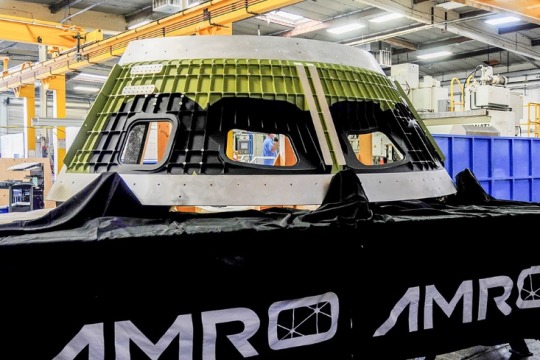
The first element machined for the Artemis III Orion crew module – a cone panel with openings for windows, which will provide a spectacular view – was designed by Lockheed Martin, and manufactured by AMRO Fabricating Corp., of South El Monte, California. The completed panel made its way to NASA’s Michoud Assembly Facility near New Orleans, where engineers will weld it with other elements as part of Orion’s pressure vessel.

Orion’s European Service Module primary structure for the Artemis III mission arrived at the Airbus facility in Bremen, Germany, from its Thales Alenia Space manufacturing site in Turin, Italy. The service module will be equipped with components to power Orion and provide life support to astronauts – such as air, water, heat and cooling -- during the mission that will land the first woman and next man on the Moon.

Three spacecraft adapter jettison fairing panels were fitted onto Orion’s service module inside the Neil Armstrong Operations and Checkout Building at Kennedy. Once secured, the panels encapsulate the service module to protect it from harsh environments such as heat, wind, and acoustics as the spacecraft is propelled out of Earth’s atmosphere atop the SLS rocket during NASA’s Artemis I mission.
769 notes
·
View notes
Photo
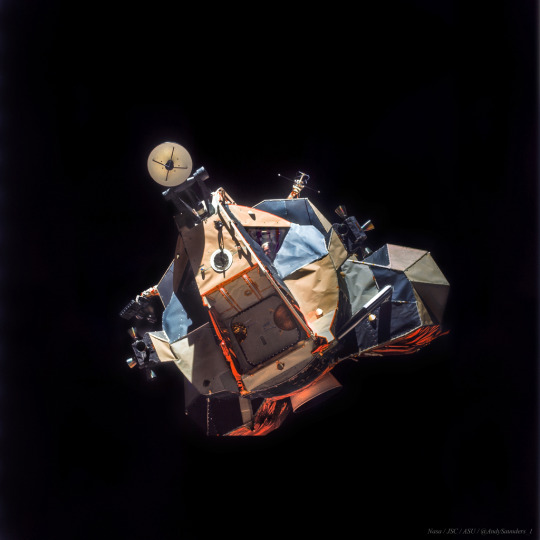
Apollo 17 s Moonship : Awkward and angular looking, Apollo 17's lunar module Challenger was designed for flight in the near vacuum of space. Digitally enhanced and reprocessed, this picture taken from Apollo 17's command module America shows Challenger's ascent stage in lunar orbit. Small reaction control thrusters are at the sides of the moonship with the bell of the ascent rocket engine underneath. The hatch allowing access to the lunar surface is seen at the front, with a round radar antenna at the top. Mission commander Gene Cernan is clearly visible through the triangular window. This spaceship performed gracefully, landing on the Moon and returning the Apollo astronauts to the orbiting command module in December of 1972. So where is Challenger now? Its descent stage remains at the Apollo 17 landing site in the Taurus-Littrow valley. The ascent stage pictured was intentionally crashed nearby after being jettisoned from the command module prior to the astronauts' return to planet Earth. Apollo 17's mission came to an end 47 years ago today. It was the sixth and last time astronauts landed on the Moon. via NASA
239 notes
·
View notes
Text
Throwback Thursday: Frequently Asked Questions about Apollo
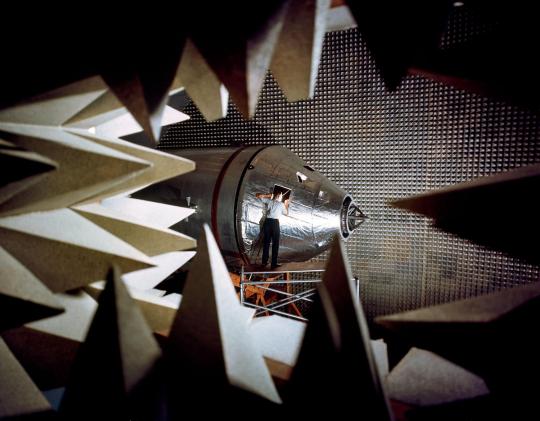
In celebration of the 50th anniversary of Apollo 11, we’ll be sharing answers to some frequently asked questions about the first time humans voyaged to the Moon. Answers have been compiled from archivists in the NASA History Office.
How many people worked on the Apollo program?

At the height of Apollo in 1965, about 409,900 people worked on some aspect of the program, but that number doesn’t capture it all.
It doesn’t represent the people who worked on mission concepts or spacecraft design, such as the engineers who did the wind tunnel testing of the Apollo Command Module and then moved on to other projects. The number also doesn’t represent the NASA astronauts, mission controllers, remote communications personnel, etc. who would have transferred to the Apollo program only after the end of Gemini program (1966-1967). There were still others who worked on the program only part-time or served on temporary committees. In the image above are three technicians studying an Apollo 14 Moon rock in the Lunar Receiving Laboratory at Johnson Space Center. From left to right, they are Linda Tyler, Nancy Trent and Sandra Richards.
How many people have walked on the Moon so far?
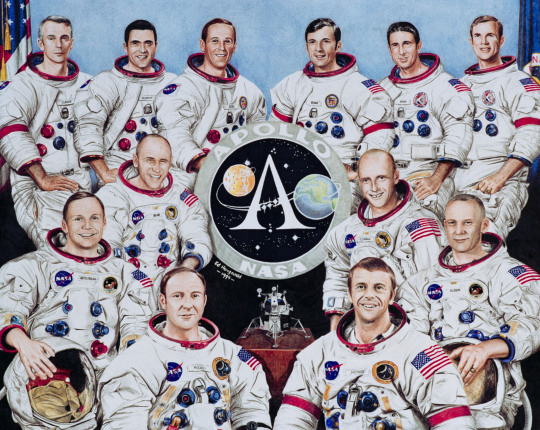
This artwork portrait done by spaceflight historian Ed Hengeveld depicts the 12 people who have walked on the Moon so far. In all, 24 people have flown to the Moon and three of them, John Young, Jim Lovell and Gene Cernan, have made the journey twice.
But these numbers will increase.
Are the U.S. flags that were planted on the Moon still standing?

Every successful Apollo lunar landing mission left a flag on the Moon but we don’t know yet whether all are still standing. Some flags were set up very close to the Lunar Module and were in the blast radius of its ascent engine, so it’s possible that some of them could have been knocked down. Neil Armstrong and Buzz Aldrin both reported that the flag had been knocked down following their ascent.

Our Lunar Reconnaissance Orbiter took photographs of all the Apollo lunar landing sites. In the case of the Apollo 17 site, you can see the shadow of the upright flag.
But why does it look like it’s waving?
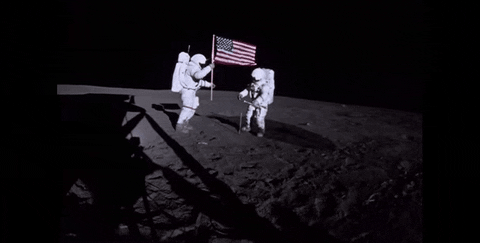
The flags appear to “wave” or “flap” but actually they’re swinging. Swinging motions on Earth are dampened due to gravity and air resistance, but on the Moon any swinging motion can continue for much longer. Once the flags settled (and were clear of the ascent stage exhaust), they remained still.
And how is the flag hanging? Before launching, workers on the ground had attached a horizontal rod to the top of each flag for support, allowing it to be visible in pictures and television broadcasts to the American public. Armstrong and Aldrin did not fully extend the rod once they were on the Moon, giving the flag a ripple effect. The other astronauts liked the ripple effect so much that they also did not completely extend the rod.
Why don’t we see stars in any of the pictures?
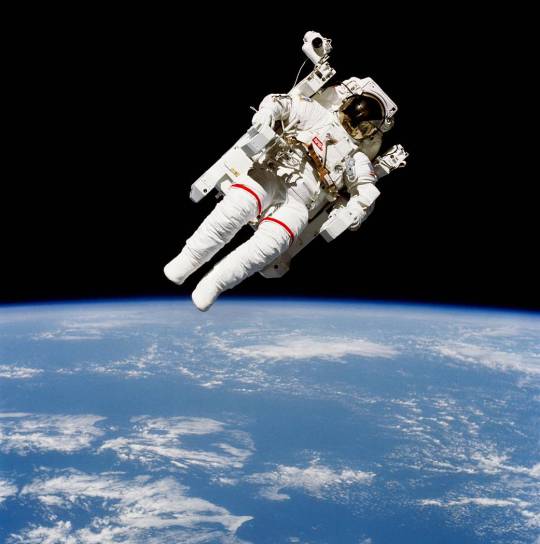
Have you ever taken a photo of the night sky with your phone or camera? You likely won’t see any stars because your camera’s settings are likely set to short exposure time which only lets it quickly take in the light off the bright objects closest to you. It’s the same reason you generally don’t see stars in spacewalk pictures from the International Space Station. There’s no use for longer exposure times to get an image like this one of Bruce McCandless in 1984 as seen from Space Shuttle Challenger (STS-41B).
The Hasselblad cameras that Apollo astronauts flew with were almost always set to short exposure times. And why didn’t the astronauts photograph the stars? Well, they were busy exploring the Moon!
When are we going back to the Moon?
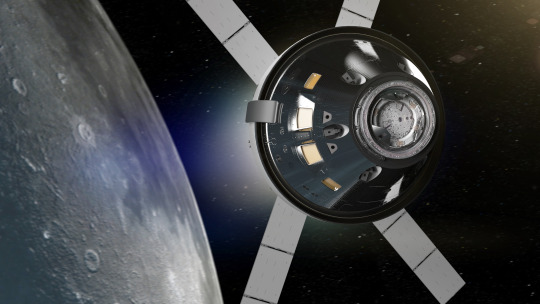
The first giant leap was only the beginning. Work is under way to send the first woman and the next man to the Moon in five years. As we prepare to launch the next era of exploration, the new Artemis program is the first step in humanity’s presence on the Moon and beyond.
Keep checking back for more answers to Apollo FAQs.
Make sure to follow us on Tumblr for your regular dose of space: http://nasa.tumblr.com.
#Artemis#Artemis Generation#apollo 11#Apollo#Apollo50th#NASA#astronauts#moon2mars#moon2024#tbt#throwbackthursday
2K notes
·
View notes
Text
Apollo Program: Lunar Module (LM) production and names
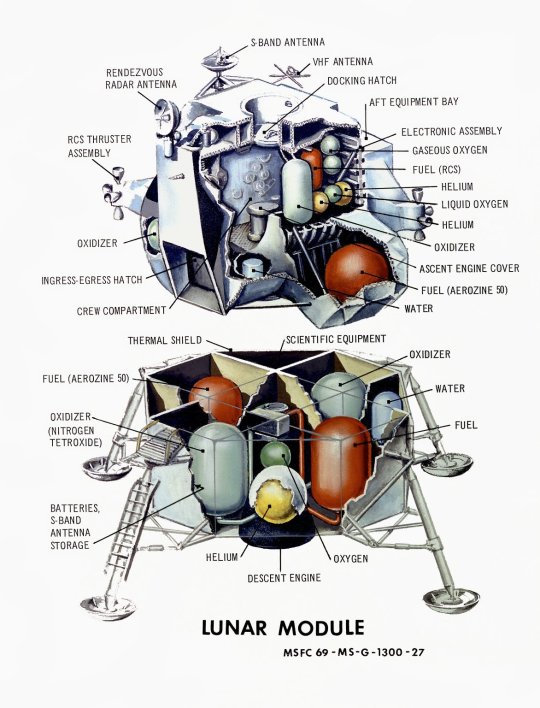
The Grumman Aerospace Corporation was awarded the contract on November 7, 1962. Originally designated Lunar Excursion Module (LEM), NASA ordered 25 lunar modules (10 test articles and 15 production models) for testing and landing on the moon. This was to go with the 15 Saturn Vs and Apollo CSMs. They were assembled in Grumman's factory in Bethpage, New York.
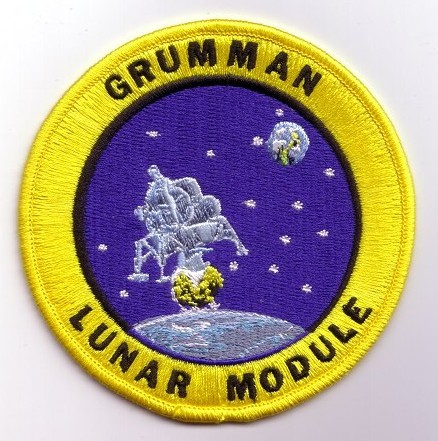

"There were initially four major subcontractors: Bell Aerosystems (ascent engine), Hamilton Standard (environmental control systems), Marquardt (reaction control system) and Rocketdyne (descent engine).
The Primary Guidance, Navigation and Control System (PGNCS) was developed by the MIT Instrumentation Laboratory; the Apollo Guidance Computer was manufactured by Raytheon (a similar guidance system was used in the command module). A backup navigation tool, the Abort Guidance System (AGS), was developed by TRW."
-Information from Wikipedia: link
After the Gemini 3 spacecraft was dubbed Molly Brown by Gus Grissom, NASA forbade naming spacecraft. For Apollo 9, this changed due to mission controllers in Houston needing a way to differentiate between the two spacecraft.
Between 1969 and 1972, Grumman produced a series of insignias for their Lunar Modules which were distributed in limited quantities to their employees in the form of decals and prints.
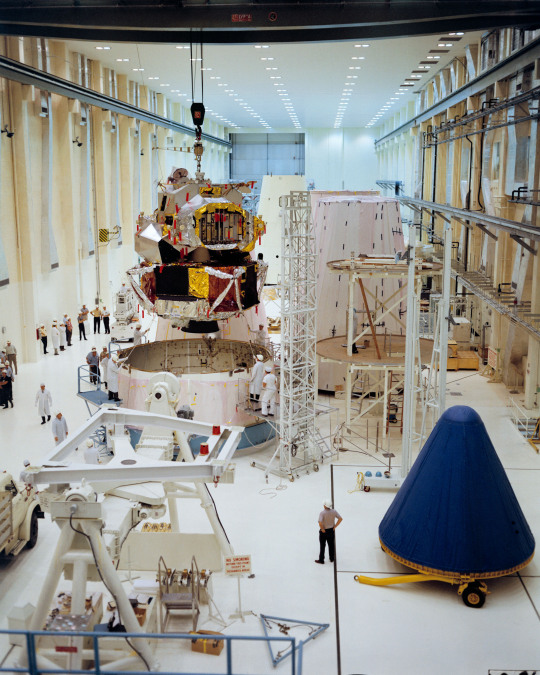
Apollo 5 (LM-1): none

Apollo 3 (and later 2) (LM-2): Never used, intended for a mission similar to Apollo 5. The success of LM-1 led to the cancellation.
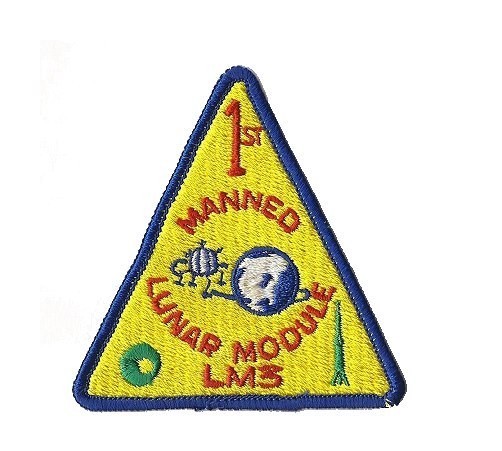
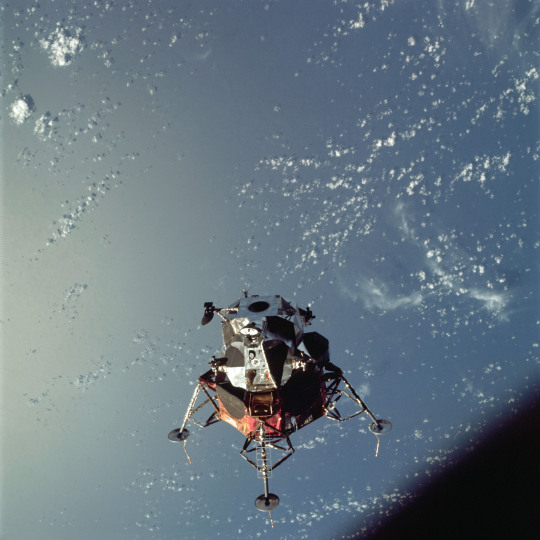
Apollo 9 (LM-3): Spider

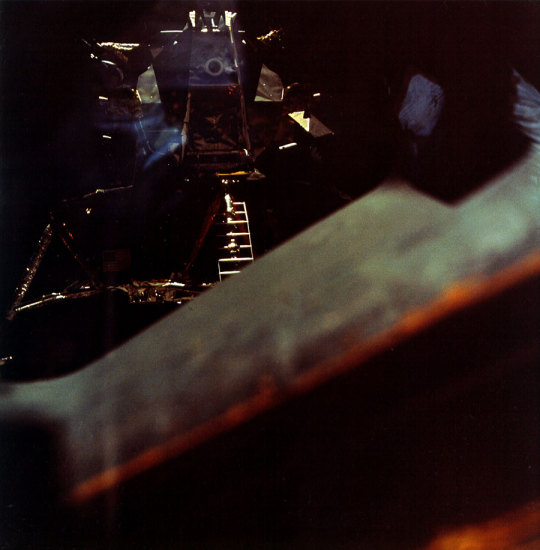
Apollo 10 (LM-4): Snoopy. The LM ascent stage in heliocentric orbit and is the only known one to have survived intact
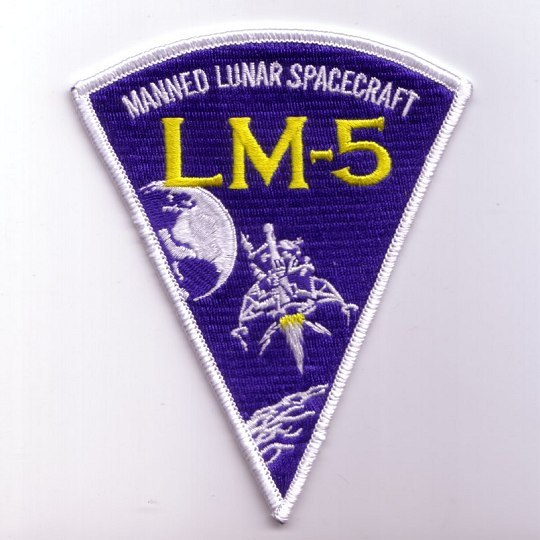
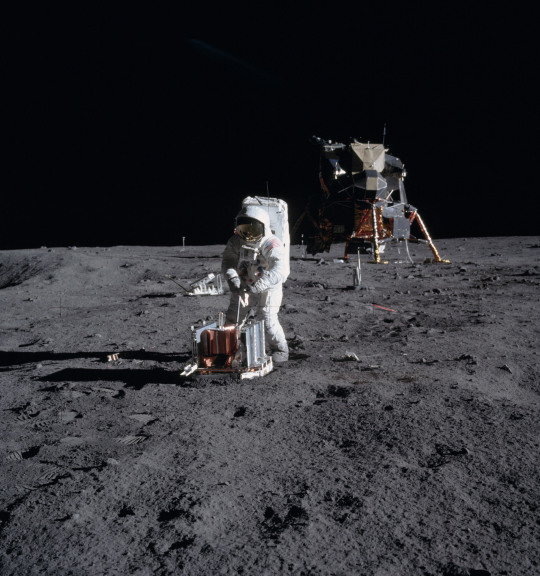
Apollo 11 (LM-5): Eagle (originally named haystack)

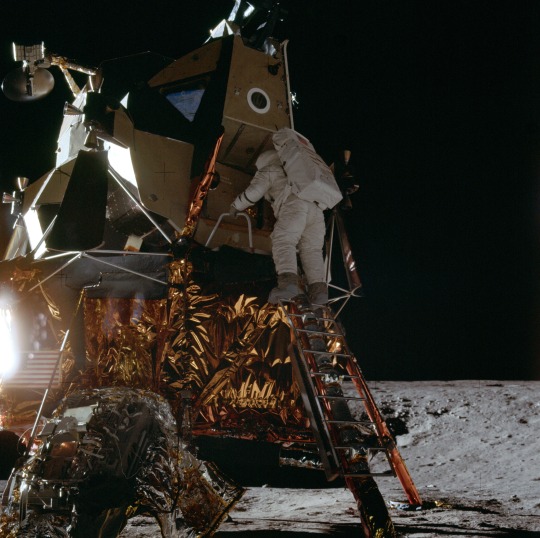
Apollo 12 (LM-6): Intrepid
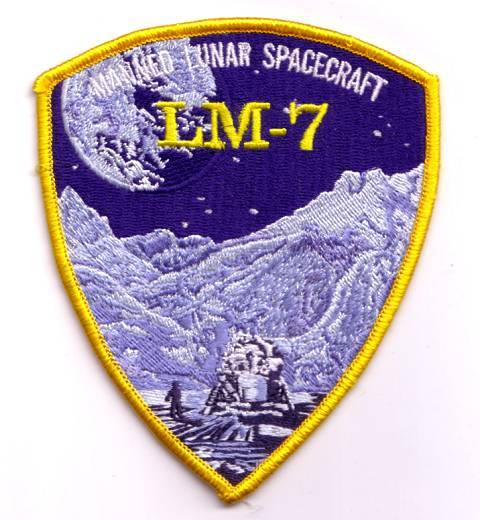
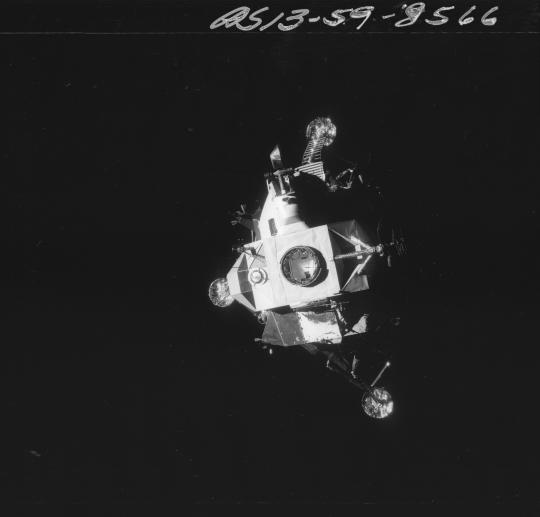
Apollo 13 (LM-7): Aquarius
Humorously, Grumman sent North American (the manufacturer of the Apollo Command and Service Module) a tow bill sometime after the crew returned. North American retorted back saying they've never sent them a tow bill for the previous missions.
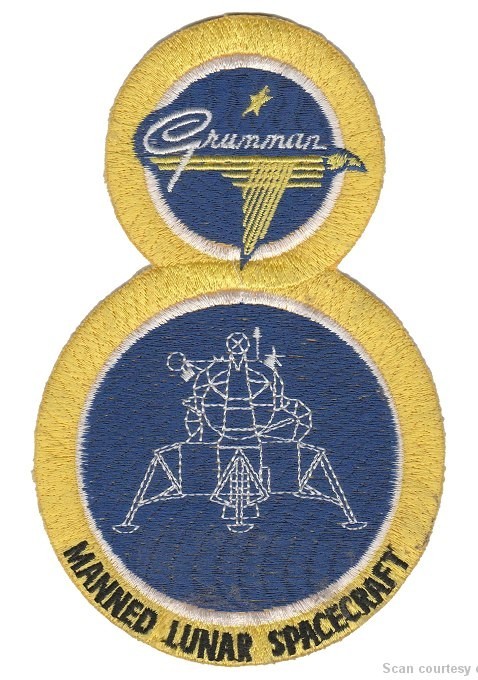

Apollo 14 (LM-8): Antares.
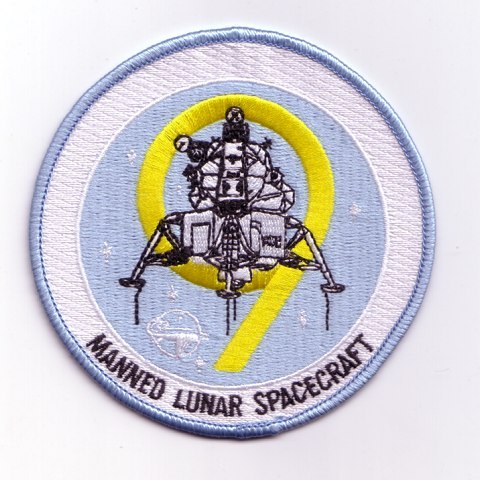
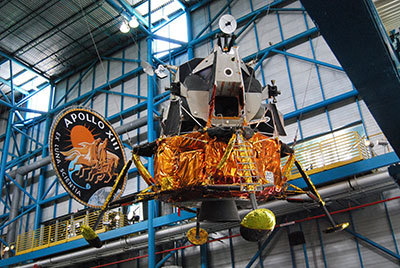
Apollo 15 (originally) (LM-9): never used, on display the Kennedy Space Center.
Intended for Apollo 15 and was the last H-type mission. When Apollo 18 was cancelled, it was decided to make Apollo 15 the first J-type mission.

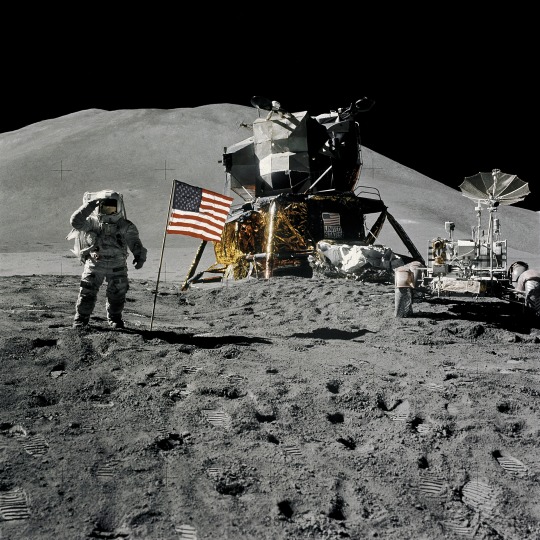
Apollo 15 (LM-10): Falcon, originally intended for Apollo 16. First of the extended stay series.
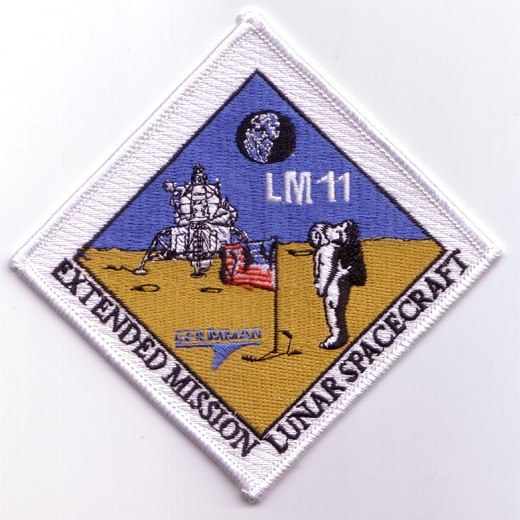

Apollo 16 (LM-11): Orion, originally intended for Apollo 17
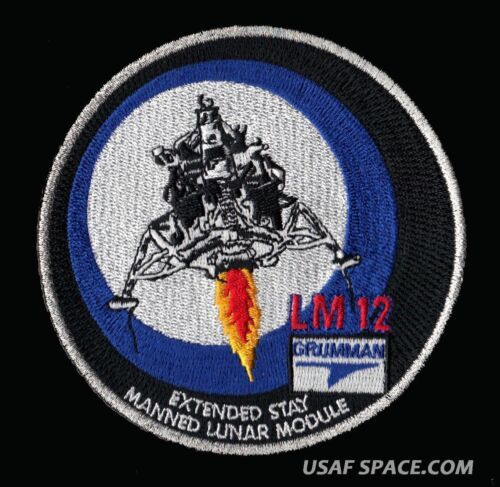

Apollo 17 (LM-12): Challenger, originally intended for Apollo 18.
Note: this name was reused for the second operational Space Shuttle Orbiter. After the Challenger Disaster, NASA officially retired the name.
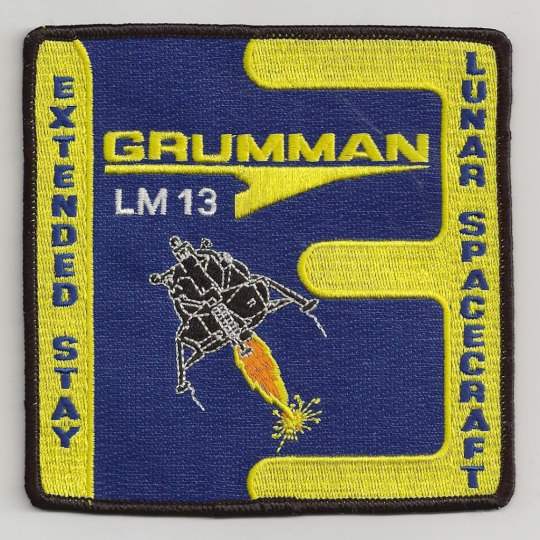

Apollo 18 (LM-13): never used, originally intended for 19. It was partially completed when Apollo 18 and 19 were cancelled. Later restored by Grumman workers and is on display at the Cradle of Aviation History and Education Center.
Apollo 19 (LM-14): never used, originally intended for Apollo 20. It was partially completed when Apollo 18 and 19 were cancelled. What was completed, was later scrapped.

Apollo 20 (LM-15): never used, partially completed, scrapped. When Apollo 20 was cancelled, it was intended for modification into the Apollo Telescope Mount. Later the Telescope Mount was integrated into Skylab and this dedicated mission was cancelled.
source, source, source, source, source
NASA ID: MSFC-69-MS-G-1300-27, S67-50927, AS09-21-3183, AS10-34-5087, AS11-40-5946, AS12-46-6726, AS13-59-8566, AS14-66-9306, AS15-88-11866, AS16-113-18339, AS17-140-21370
#Lunar Module#Apollo Program#Apollo 5#LM-1#LM-2#Apollo 9#LM-3#Apollo 10#LM-4#Apollo 11#LM-5#Apollo 12#LM-6#Apollo 13#LM-7#Apollo 14#LM-8#LM-9#Apollo 15#LM-10#Apollo 16#LM-11#Apollo 17#LM-12#Apollo 18#LM-13#Apollo 19#LM-14#Apollo 20#LM-15
233 notes
·
View notes
Photo

NASA’s Orion Spacecraft On NASA’s Artemis missions, a unique spacecraft will take flight. Orion, NASA’s newest spacecraft built for humans, is developed to be capable of sending astronauts to the Moon and is a key part of eventually sending them on to Mars. An uncrewed Orion will be tested on Artemis I and travel 40,000 miles past the Moon, farther than any spacecraft built for humans has gone before. This mission will prepare for a crewed Artemis II mission and subsequent missions that will deliver astronauts to the surface of the Moon and to the lunar Gateway. Orion’s crew and service module will carry astronauts to deep space. The launch abort system, positioned at the top of the spacecraft, is only used to pull the crew module and the astronauts inside it safely away from the rocket in the event of an emergency, and will be jettisoned after a successful launch and ascent atop the Space Launch System rocket. Crew Module Orion’s crew module, sometimes referred to as the capsule, capitalizes on more than 60 years of NASA space exploration experience. Built by main contractor Lockheed Martin, it can provide living space on missions for four astronauts for up to 21 days without docking to another spacecraft. Advances in technology for deep space travel such as life support, avionics, power systems, and state-of-the-art thermal protection will support the crew during launch, landing, and recovery. Pressure vessel The underlying structure of the crew module is called the pressure vessel. The pressure vessel consists of seven large aluminum alloy pieces that are joined together using friction-stir welding at NASA’s Michoud Assembly Facility in New Orleans. The process produces a strong, yet lightweight, airtight capsule. Backshell Covering the pressure vessel is the protective cover on the cone-shaped sides of the crew module known as the backshell, made up of 1,300 thermal protection system tiles. The tiles are made of a silica fiber material similar to those used for more than 30 years on the space shuttle, and will protect the spacecraft from both the cold of space and the extreme heat of re-entry. Heat shield The bottom of the capsule, which will experience the hottest temperatures as Orion returns to Earth, is covered by the world’s largest ablative heat shield, measuring 16.5 feet in diameter. The heat shield will protect Orion as it enters Earth’s atmosphere initially travelling about 25,000 mph and endure temperatures of nearly 5,000°F — about half as hot as the Sun. The outer surface of the heat shield is made of blocks of a material called Avcoat, a reformulated version of the material used on the Apollo capsules. During descent, the Avcoat ablates, or burns off in a controlled fashion, transporting heat away from Orion. Forward Bay Cover The forward bay cover at the top of the crew module protects the top portion of the capsule and Orion’s parachutes during launch, orbital flight, and re-entry. It is covered with the same thermal protection tiles as the backshell. After the spacecraft re-enters Earth’s atmosphere, it is jettisoned at an altitude of approximately 23,000 feet to allow for deployment of the parachute system. Reaction Control System Thrusters The crew module has a propulsion system composed of 12 small engines called reaction control system thrusters. When the crew module separates from the service module for re-entry, the 12 thrusters are used to guide the crew module, ensure that it’s properly oriented with the heat shield facing downward, and keep the spacecraft stable during its descent. Interior Inside Orion, an aluminum structure of crisscrossing beams called the backbone assembly provides the floor structure where the crew seats will be attached and is where the crew stowage lockers will be located. Most of the equipment the crew will need to live in space on future missions will be stored here. The four seats in the crew module are designed to accommodate nearly 99% of the human population. The seats are adjustable to ensure that astronauts can reach all the controls while in their pressure suits. Crew Accommodations A number of accommodations will help astronauts feel at home. Tanks and a dispenser provide drinking water and a simple way to rehydrate and warm food. Orion’s hygiene bay will have a new compact toilet, with a design that makes use in space easier for both men and women. A built-in exercise device provides both aerobic and strength training for astronauts. In case of a radiation event, such as a solar flare, crew members will shelter themselves in two large stowage lockers on the floor of the capsule, using the dense materials on board as shielding. Displays and Controls Astronauts will operate Orion using a sophisticated display and control system that uses advanced software to aid the crew. The crew will be able to command the spacecraft using just three display screens, about 60 physical switches, two rotational hand controllers, two translational hand controllers, and two cursor control devices. Electronic procedures are also programmed into the system to aid the crew in daily and emergency processes, saving the crew time and space and making large paper manuals of system operations obsolete. Environmental Control and Life Support Systems Environmental control and life support systems will make the crew module a habitable place for astronauts. A new regenerable system removes carbon dioxide and humidity and keeps the cabin air clean. The system also maintains the spacecraft’s temperature and pressure and detects if the internal environment becomes unsafe. Orion’s Crew Survival System spacesuits interface with life support to keep astronauts alive for up to six days to allow them to return home in the event of cabin depressurization. Parachutes The crew module houses Orion’s parachute system. The parachutes ensure a safe landing for astronauts returning to Earth at high speeds in the spacecraft. Earth’s atmosphere acting as a brake on Orion will initially slow the spacecraft down from about 25,000 mph to 325 mph. Then, the system of 11 parachutes must deploy in precise sequence to slow Orion to a relatively gentle 20 mph for splashdown in the Pacific Ocean. European Service Module Below the crew module is Orion’s European Service Module, provided by ESA (European Space Agency) and built by lead contrac¬tor Airbus. The service module is the spacecraft’s powerhouse: supplying it with electricity, propulsion, thermal control, air, and water. Propulsion Orion’s service module provides propulsion capabilities that enable Orion to go around the Moon and back on its missions. The service module has 33 engines of various sizes. The main engine will provide major maneuvering capabilities while in space, including inserting Orion into distant retrograde orbit and leaving the orbit to return to Earth. The 24 reaction control thrusters are used to steer and control Orion while in orbit. Eight auxiliary engines are also used for translational maneuvers, essentially acting as a backup to the main engine. The propulsion system also has the ability to bring the crew home in a variety of emergency situations, including abort scenarios after the launch abort system has already been jettisoned. Power The service module’s electrical power system provides power for the entire Orion spacecraft. The system manages the power generated by the module’s four solar array wings, which provide enough electricity to power two three-bedroom homes. A total of 15,000 solar cells on the four arrays are used to convert light into electricity, and the arrays can turn to remain aligned with the Sun for maximum power. Thermal Control The thermal control system includes radiators and heat exchangers to keep the astronauts and equipment at a comfortable temperature. The thermal control system includes an active portion, which transfers the heat of the entire spacecraft to the service module radiators, and a passive portion, which protects the service module from internal and external thermal environments. Consumable Storage The consumable storage system of the service module provides potable water, nitrogen, and oxygen to the crew module, stored in tanks. Potable water is provided by the water delivery system, covering usable water needs of the crew for the duration of the mission. Oxygen and nitrogen are provided by the gas delivery system, with the amount of gases in each tank adjustable based on the mission profile. Orion’s crew module will separate from the service module shortly before re-entering Earth’s atmosphere. The crew module is the only portion of Orion that will return to Earth at the end of each mission. On early flights, high-value crew module components such as avionics, and environmental control and life support systems will be reused, with plans to reuse more components on later missions. Through Artemis missions, NASA will land the first woman and the first person of color on the Moon, paving the way for a long-term, sustainable lunar presence and serving as a steppingstone for future astronaut missions to Mars.
32 notes
·
View notes
Text
50 Years Ago: Apollo 13 Crew Returns Safely to Earth
NASA - Apollo 13 Mission patch.
April 17, 2020
The crew of Apollo 13, Commander James A. Lovell, Command Module Pilot (CMP) John L. “Jack” Swigert and Lunar Module Pilot (LMP) Fred W. Haise, still 175,000 miles from Earth, looked back at the Moon and realized that according to the normal flight plan, Lovell and Haise would have just landed their Lunar Module (LM) Aquarius in the Fra Mauro highlands as Swigert orbited the Moon in the Command Module (CM) Odyssey. Of course, those plans changed a little over two days before when an explosion rocked their spacecraft, depriving Odyssey of power and oxygen. All three took refuge in Aquarius and, abandoning Moon landing plans, looped around the Moon, using the LM’s engine to speed their return to Earth instead of landing them on the lunar surface. In Mission Control at the Manned Spacecraft Center, now the Johnson Space Center in Houston, teams of flight controllers worked around the clock to ensure the astronauts returned safely. Lead Flight Director Milton L. Windler and his Maroon Team as well as Capcom Jack R. Lousma had just resumed their positions in Mission Control to begin their next shift in support of Apollo 13. Approximately 36 hours remained until splashdown.
Above: Swigert entering the LM Aquarius through the docking tunnel.
Bellow: Haise in the LM Aquarius making notes on a checklist.
Although Mission Control wanted Swigert and Haise to get some sleep while Lovell kept watch, all three crewmembers stayed awake and continued working. Lousma informed them that the status of all their consumables appeared sufficient to last the remainder of the mission, some with very comfortable margins, with the partial powerdown of Aquarius contributing significantly to power and cooling water margins. Eventually, Haise went to sleep in the tunnel between the two spacecraft with his head resting on the LM’s ascent engine cover and Swigert on the floor of the LM. While Lovell kept watch, Lousma walked him through the planning activities ongoing in Mission Control, including a possible final midcourse correction about five hours before entry, the charging of two of Odyssey’s three batteries from Aquarius, a procedure never done before but essentially just reversing one in which the CM supplies power to the LM on its initial activation, reactivating the CM and the sequence for jettisoning first the Service Module (SM) and finally the LM just prior to reentry.
Mission Control on the day before splashdown.
Above: Slayton during a press conference on flight day 5.
Bellow: Armstrong during his flight day 5 press conference.
Shortly after the astronauts began the 15-hour recharge of Odyssey’s batteries, Flight Director Glynn S. Lunney and his Black Team of controllers relieved Windler’s team and Joseph P. Kerwin replaced Lousma as Capcom. Swigert and Haise ended their short sleep periods and Lovell took a turn at resting, but was back up within two hours. Due to cold cabin temperatures, about 51o F in Aquarius and in the 40s in Odyssey, Lovell reported to Kerwin that he and Haise used the lunar surface overshoes to keep their feet warm and donned two pairs of underwear. Back in Houston, Chief of Flight Crew Operations Donald K. “Deke” Slayton and Apollo 11 Commander Neil A. Armstrong gave separate press conferences to update the media on the flight of Apollo 13.
Above: Lovell in the LM Aquarius. Middle: Swigert sleeping in the LM Aquarius.
Bellow: Haise sleeping in the LM Aquarius.
With all three crewmembers awake, Kerwin read up to them the overall flow of events for last six and a half hours of their mission, beginning with activating and warming up the CM’s Reaction Control System (RCS) thrusters followed by activating the LM’s systems to prepare for the final midcourse correction maneuver using the LM’s RCS thrusters. From that position, they would jettison the SM and try to obtain some photographs that might show the damage from the oxygen tank explosion. About two hours prior to entry, they would reactivate the CM which had been in a dormant state for four days, one hour later jettison the LM and begin preparations for reentry into the Earth’s atmosphere. After that long conversation, the Gold Team of Flight Director Gerald D. “Gerry” Griffin relieved Lunney’s engineers and Vance D. Brand relieved Kerwin at the Capcom console. Brand’s first order of business was to send up to the crew the CM stowage plan including which items to transfer to the LM and what things to bring in from the LM prior to separation, including the astronauts themselves! Proper stowage was essential because mass distribution affected the aerodynamic performance of the CM.
Above: An impromptu meeting around the Flight Director’s console to discuss
reentry procedures. Bellow: Lovell (left) and Swigert reviewing the entry checklist.
When it was time to read up the complex new procedures to reactivate the CM and separate the SM, astronaut Thomas K. “Ken” Mattingly took over the Capcom duties. Mattingly, the original Apollo 13 CMP grounded two days before launch due to concerns over his exposure to German measles, had spent hours in the CM simulator finalizing the procedures. A coded exchange between Lovell and Brand (Lovell: “Are the flowers in bloom in Houston?”, Brand: “No, not yet. Still must be winter.”) confirmed that Mattingly did not contract the infectious disease and had put his talents to work to help recover his fellow astronauts. Brand then read up the procedure for the LM deactivation and jettison to Haise. Aboard Apollo 13, now 86,000 miles from Earth and continuing to accelerate, Lovell and Swigert tried to get some sleep while Haise took the watch, while in Mission Control Lousma relieved Brand at the Capcom console and avoided calls to the crew to allow Haise to rest as well. The increasingly cold temperatures made sleep difficult, and Haise began to experience chills, the first symptoms of his developing urinary tract infection likely caused by dehydration. To help warm the spacecraft and make the crew more comfortable, Mission Control gave the GO to activate the LM three hours early and orient it so it received more sunlight through its windows. Flight Director Eugene F. “Gene” Kranz and his White Team of controllers took their consoles about eight hours before entry, relieving Griffin’s team, and planned to monitor the mission all the way to splashdown. Kerwin replaced Lousma at the Capcom position for the last hours of the mission.
Above: View of the damaged SM shortly after the crew jettisoned it.
Bellow: View of the departing SM, with the CM in the foreground and
the Moon in the far distance.
With about six and a half hours to go in the flight of Apollo 13, Swigert entered Odyssey to begin the reactivation process. Using the LM’s navigation system, Lovell began the process of aligning the docked spacecraft to perform the final mid-course maneuver of the mission to fine tune the angle at which Apollo 13 entered the Earth’s atmosphere. Five hours before entry and at a distance of 44,000 miles from Earth, the astronauts fired the LM’s RCS thrusters for 23 seconds. Within one minute after the end of the successful burn, Lovell reoriented the spacecraft to prepare to jettison the SM that occurred 20 minutes later, at a distance of 41,049 miles from Earth. About two minutes later, the astronauts got their first view of the damaged SM, with Lovell exclaiming, “There’s one whole side of that spacecraft missing. Right by the high gain antenna, the whole panel is blown out, almost from the base to the engine.” Haise concurred, “It’s really a mess.”
Swigert continued activating Odyssey’s systems, some running from one the CM’s batteries with others still drawing power from Aquarius. At two and a half hours before entry, Mission Control gave Swigert the GO to activate all the CM’s systems from the batteries as Haise terminated the power transfer from the LM. He then joined Swigert in Odyssey to assist with the activation. With direct communications reestablished with Odyssey, Mission Control updated the spacecraft’s onboard computer and began monitoring its systems via telemetry, showing a cabin temperature of 38o F!
Above: View of the departing LM Aquarius shortly after the crew jettisoned it.
Bellow: Photograph taken by an unidentified airline passenger of the
LM and SM burning up on reentry.
The next task for the astronauts was the jettison of the LM Aquarius, the lifeboat that kept them safe for four days after the accident. Lovell essentially put Aquarius on autopilot, joined Swigert and Haise in Odyssey and closed the LM and CM hatches behind him. They partially depressurized the vestibule between the two spacecraft, using the remaining pressure as a propulsive force to send the LM on its way. At 141 hours and 30 minutes into the flight and at an altitude of 12,946 miles, they jettisoned the LM, prompting Capcom Kerwin to say, “Farewell, Aquarius, and we thank you.” Both the SM and LM burned up on reentry, and an unidentified passenger aboard an Air New Zealand airliner en route from Fiji to Auckland captured an image of them streaking across the night sky. Apollo 13 was now down to its final component, the CM Odyssey. The spacecraft continued to accelerate as it approached the Earth, and about an hour after saying farewell to the LM, it encountered the top layers of the planet’s atmosphere, having reached a top velocity of 24,689 miles per hour. The contact with molecules in the upper atmosphere at such high speed caused them to be ionized, cutting off communications with the spacecraft for several minutes, a period known as the blackout. The rapid deceleration resulted in the astronauts experiencing a peak load of about 5.2 gs.
Above: Apollo 13 descending under parachutes.
Middle: Controllers in Mission Control watching the descent of Apollo 13.
Bellow: Moment Apollo 13 splashed down in the Pacific Ocean.
Coming out of the blackout, communications between Odyssey and Mission Control were restored. At an altitude of 24,000 feet, two drogue parachutes deployed to slow and stabilize the descending craft. At 10,000 feet the three main orange-and-white parachutes opened to gently guide Odyssey to the Pacific waters, with splashdown occurring after a flight of 142 hours 54 minutes and 41 seconds. The splashdown point was about one mile from the predicted target and four miles from prime recovery ship the USS Iwo Jima (LPH-2). The crew of Apollo 13 had made it back to Earth safely. In Mission Control, pandemonium erupted as the exhausted flight controllers, joined by astronauts, managers and VIPs, rejoiced in the successful conclusion of a very perilous mission.
Above: Flight Directors (left to right) Griffin, Kranz, Lunney and Windler anxiously monitoring the return of Apollo 13. Bellow: Flight Directors (left to right) Griffin, Kranz, Lunney and Windler cheering after the successful splashdown of Apollo 13.
The recovery team of US Navy Frogmen and sailors from the USS Iwo Jima recovered the astronauts and delivered them by helicopter to the deck of the carrier. The Iwo Jima’s skipper, Captain Leland E. Kirkemo and Rear Admiral Donald C. Davis, Commanding Officer of Task Force 130 the Pacific Recovery Forces, welcomed them aboard the ship. After a brief welcoming ceremony, the astronauts were taken to the ship’s sick bay for a brief medical checkup and telephone conversations with their families. President Richard M. Nixon telephoned to congratulate them on their successful recovery. About an hour later, the sailors brought Odyssey aboard the ship. The Apollo 13 postflight activities differed from those of the previous two Apollo missions in that the crew did not enter quarantine since they didn’t land on the Moon, although all the pertinent facilities and personnel were deployed on the Iwo Jima.
Above: Apollo 13 astronaut Lovell has just emerged from the CM as Haise (left)
and Swigert watch from the recovery raft minutes after splashdown.
Bellow: Apollo 13 astronauts (left to right) Haise, Lovell and Swigert wave
to sailors after exiting the recovery helicopter on the USS Iwo Jima.
Above: Apollo 13 astronauts (left to right) Haise, Swigert and Lovell welcomed
aboard the USS Iwo Jima by Admiral Davis and Captain Kirkemo (far right).
Bellow: Sailors placing the Apollo 13 CM on the deck of the USS Iwo Jima.
Footnote: In Ron Howard’s film Apollo 13, Lovell wearing his old US Navy captain’s uniform makes a brief appearance playing the part of Capt. Kirkemo.
Related articles:
50 Years Ago: “Houston, We’ve Had a Problem”
http://orbiterchspacenews.blogspot.com/2020/04/50-years-ago-houston-weve-had-problem.html
NASA Commemorates 50th Anniversary of Apollo 13, ‘A Successful Failure’
https://orbiterchspacenews.blogspot.com/2020/04/nasa-commemorates-50th-anniversary-of.html
Related links:
Apollo: https://www.nasa.gov/mission_pages/apollo/index.html
Apollo 13: https://www.nasa.gov/mission_pages/apollo/apollo-13
Images (mentioned), Text, Credits: NASA/Kelli Mars/JSC/John Uri.
Greetings, Orbiter.ch
Full article
28 notes
·
View notes
Text
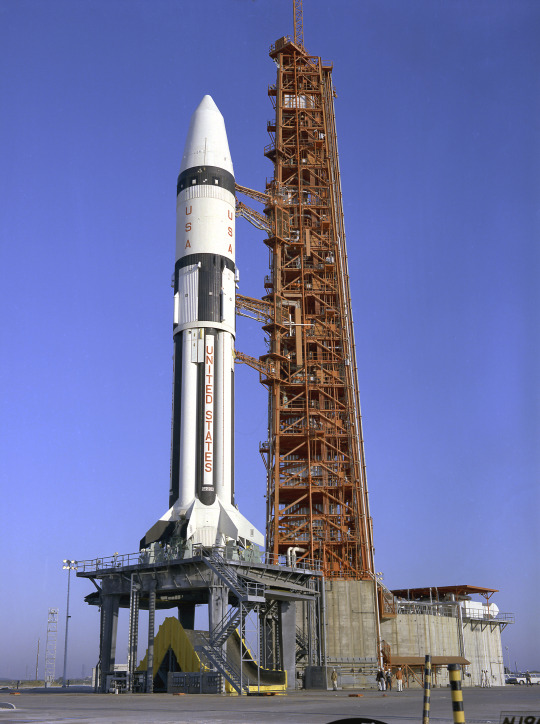
The first test flight of the Apollo Lunar Module in Earth orbit launched from Cape Kennedy launch complex 37B aboard Saturn IB SA-204R on January 22, 1968.
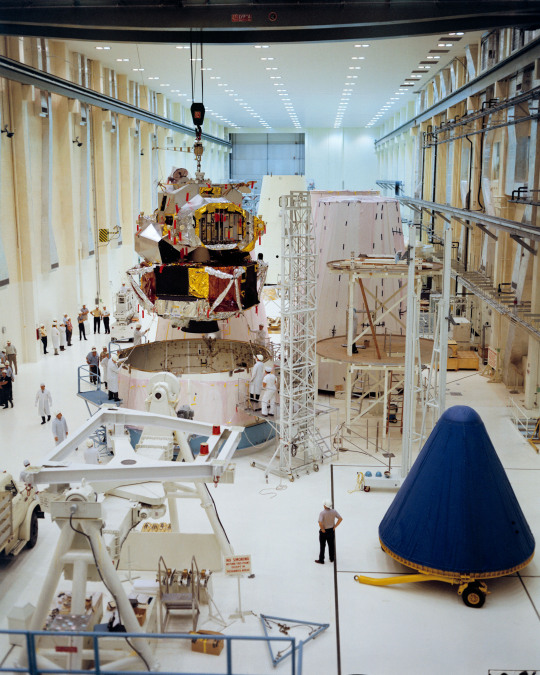
Here, we see LM-1 being loaded into the spacecraft adapter that would protect it during launch. The nose cone (at right, under a protective blue cover) would go on top.
The unmanned LM-1 flew without several systems (like landing gear) that it wouldn't need for the test and the windows in front were covered with aluminum plates. After testing of the descent and ascent stage engines, the two sections of LM-1 burned up in the atmosphere on re-entry.
1 note
·
View note
Text
China's lunar mission just landed on the Moon and is ready to bring back some rocks
https://sciencespies.com/space/chinas-lunar-mission-just-landed-on-the-moon-and-is-ready-to-bring-back-some-rocks/
China's lunar mission just landed on the Moon and is ready to bring back some rocks

China has landed an ambitious rock-collecting mission on the Moon.
The China National Space Administration (CNSA) abruptly cut off its live coverage about a half hour before the landing, which was scheduled for 10:13 am ET (0313 UTC) on Tuesday. The agency later announced that the spacecraft had touched down, according to CGTN.
The lander is one of four robots in a mission called Chang’e-5, which aims to send a sample of the lunar surface to Earth before the end of 2020. If successful, it will be the first time a country has brought home Moon rock in more than 40 years.

Concept art of Chang’e-5 touchdown. (CNSA)
The lander’s robotic arm is programmed to drill about 6 feet (1.8 metres) into the lunar surface to collect 4.4 pounds (2 kilograms) of lunar rock and dust from a previously unexplored region: a volcanic plain called Mons Rümker. The material could provide new information about the Moon’s past volcanic activity.
The robotic arm should then transfer the sample to an ascent module sitting on top of the lander. With the sample secure, that module should lift off to rendezvous with the mission’s orbiter, which is currently circling the Moon with its Earth-reentry module in tow.
If all goes well, the trio of robots will then return to Earth with their Moon rock prize, which is set to land in Inner Mongolia in mid-December.
“This is a really audacious mission,” David Draper, the deputy chief scientist at NASA, told the New York Times. “They’re going to move the ball down the field in a big way with respect to understanding a lot of things that are important about lunar history.”
‘We will rewrite the history of the Moon’
Previous Moon rock samples collected by the US and Soviet Union have led scientists to conclude that volcanoes were active on the lunar surface about 3 billion years ago. But scientists estimate that regions like the Mons Rümker plain may have hosted volcanic activity as recently as 1.2 billion years ago, based on observations of the lunar surface.
If lunar volcanoes were indeed active that recently, “we will rewrite the history of the Moon,” Xiao Long, a planetary geologist at the China University of Geosciences in Wuhan, told Nature.
Analyzing lunar rocks could help planetary scientists understand how the Moon was able to sustain volcanic activity for billions of years.
“The Moon is small, so its heat engine should have run out a long time ago,” Clive Neal, a geoscientist at the University of Notre Dame in Indiana, told Nature.
The rocks could also help scientists determine the age of regions on other planets like Mars. Researchers investigate this by analyzing the ages of Moon rock samples, then counting the craters on the areas of the Moon from which those samples were collected. More craters indicate an older region, since there has been more time for impacts to accumulate, and the early solar system was more violent than the present.
So far, scientists have only been able to study Moon rock samples from lunar regions that are at least 3 billion years old. Because the Mons Rümker plain appears to be far younger, samples from the region could help scientists more precisely estimate the region’s age.
Scientists can then estimate the age of other planetary regions by comparing how many craters their surfaces have relative to the Moon.
NASA and China are racing to the Moon
The Chang’e-5 mission launched early on November 24, local time, from China’s Wenchang Satellite Launch Center on Hainan Island.
It’s the sixth in a series of ambitious missions by China to explore the Moon, which could potentially lead to the building of a human settlement there.
This is the third time that CNSA has landed a robot on the lunar surface. The agency now has seven spacecraft operating on the Moon or in its orbit, according to SpaceNews correspondent Andrew Jones.
NASA has similar ambitions to establish a permanent lunar base, but it has not yet launched the precursor Moon missions needed to reach that goal. The agency has not landed anything on the Moon since 1972.

An artist’s concept of the Artemis Base Camp. (NASA)
However, NASA and Elon Musk‘s space-exploration company SpaceX successfully sent two astronaut crews to the International Space Station this year, marking the first time the US has launched astronauts since 2011. The missions have paved the way for landing humans on the Moon again, which NASA aims to do in 2024.
The agency also plans to send its first rover to the Moon’s south pole to map out ice reserves in 2023.
To prepare for human residence on the Moon, NASA has drafted the Artemis Accords - a series of pledges to keep space exploration peaceful, collaborative, and sustainable. Nine countries signed onto the accords this year, but China was not among them.
NASA has been unable to collaborate or coordinate with China ever since Congress banned the agency from doing so in 2011.
Still, NASA Associate Administrator Thomas Zurbuchen offered congratulations to China for its landing on Tuesday.
“This is no easy task,” he wrote on Twitter.
“When the samples collected on the Moon are returned to Earth, we hope everyone will benefit from being able to study this precious cargo that could advance the international science community.”
This article was originally published by Business Insider.
More from Business Insider:
#Space
1 note
·
View note
Photo
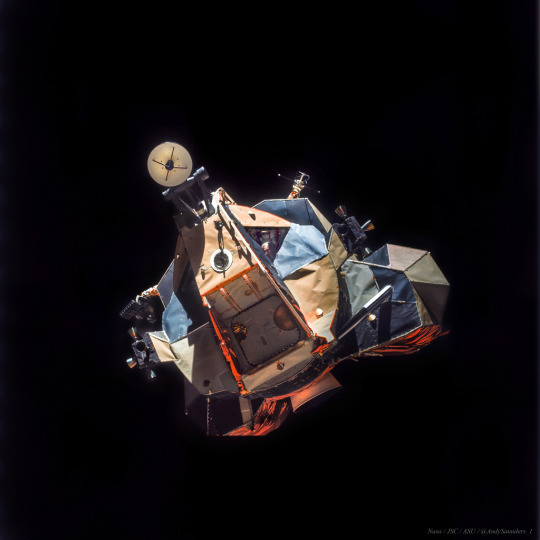
2019 December 19
Apollo 17's Moonship
Image Credit: Apollo 17, NASA, (Image Reprocessing: Andy Saunders)
Explanation: Awkward and angular looking, Apollo 17's lunar module Challenger was designed for flight in the near vacuum of space. Digitally enhanced and reprocessed, this picture taken from Apollo 17's command module America shows Challenger's ascent stage in lunar orbit. Small reaction control thrusters are at the sides of the moonship with the bell of the ascent rocket engine underneath. The hatch allowing access to the lunar surface is seen at the front, with a round radar antenna at the top. Mission commander Gene Cernan is clearly visible through the triangular window. This spaceship performed gracefully, landing on the Moon and returning the Apollo astronauts to the orbiting command module in December of 1972. So where is Challenger now? Its descent stage remains at the Apollo 17 landing site in the Taurus-Littrow valley. The ascent stage pictured was intentionally crashed nearby after being jettisoned from the command module prior to the astronauts' return to planet Earth. Apollo 17's mission came to an end 47 years ago today. It was the sixth and last time astronauts landed on the Moon.
∞ Source: apod.nasa.gov/apod/ap191219.html
35 notes
·
View notes